This section contains Zhiduo (直裰), Zhishen (直身), Daopao (道袍).
Size range: 165/88A to 185/104A.
Please read the introduction of the topic and how to use this guide in advance.
Introduction
Zhiduo is a kind of costume from the Song Dynasty, the initial is mostly worn by monks, a few literati also wear, Song Zhiduo is generally not slit. By the Ming Dynasty, Zhiduo had become widely popular among literati and scholars, and the basic features of Ming Zhiduo were the cross collar, knee-length garment, slit on both sides without Bai (摆), generally with a collar guard on the collar, and mostly with pipa sleeves. The cutting and sewing patterns in this chapter are based on Ming Zhiduo.
Zhishen was also an important costume of the Ming Dynasty, as well as Zhiduo and Daopao, the basic features of Zhishen are the same as Zhiduo, with a cross collar, more collar protection, pipa sleeves, and knee-length, but the difference is that there is outside Bai on both sides in Zhishen.
Daopao is one of the traditional costumes of Taoism, but it was also the main style of casual wear and dress for scholars in the Ming Dynasty, so Daopao was not necessarily used as all Taoist costumes.
Daopao is a long outer garment with a cross collar and large sleeves, and a concealed Bai on both sides of the garment. The collar edge is wide and a collar guard is usually added. Daopao is larger than Zhiduo and Zhishen of the same size, especially the hem is wider.
Zhishen, Zhiduo, and Daopao shapes are still relatively similar, this section will be the same size Zhiduo and Zhishen put together, rather than separate. Commonly speaking is "Zhiduo + the external Bai (摆) = Zhishen", so in each specification of Zhiduo attached to a Zhishen drawing, the size is directly applied to the front of the same specification Zhiduo, the difference is the addition of an external Bai.
To prevent confusion, the three simple ways to distinguish between them are briefly described as follows.
- Zhiduo both sides only slit, but no Bai.
- Zhishen has Bai on both sides, which is on the outside.
- Daopao has Bai on both sides, which is on the inside.
For a detailed description of Bai, please refer to the second part of this article:
Size chart & How to sew the "Bai"
How to sew the Zhishen's Bai
Take the left Bai as an example, Zhishen's Bai can be divided into three pieces: front, middle, and back.
Fold the middle piece along the center axis, sew the front and middle pieces together in the direction of the arrow on the drawing, and sew the sides together with the numbered sides.
The top view shows the folding direction of the Bai and the stitching of the edges, with the curved dotted line connecting the small edges of the Bai.
As shown below, the sides of the clothes are slit, the back edge of the back Bai (f) is sewn to the back piece of the clothes (f), and the front edge of the front Bai (e) is sewn to the front edge of the clothes (e), according to the arrow and the direction of the same letter, the edges of the same letter should be sewn together.
How to sew the Daopao's Bai
Take the left Bai as an example, Daopao's Bai can be divided into a large Bai back piece and four triangular pieces of small Bai piece.
- The large Bai back piece: showing a trapezoidal shape, the lower edge is the arc of alignment with the clothes hem.
- Four small triangular Bai pieces.
- 1 is formed by the partial mirror image of the large Bai back piece.
- 2 is a mirror image of 1, equal size.
- 3 is exactly the same as 1.
- 4 is a mirror image of 3, equal size.
The same letters (abcde) are sewn together to form the overall Bai, and after folding the Bai, the small triangular parts of each Bai piece are exactly the same.
Sew the Bai in as shown by the arrows and the same letters.
Note: The top edge f of the Bai is fixed to the dotted line shown by f on the body of the garment, not to the edge of a particular piece of fabric.
Zhiduo (直裰) and Zhishen (直身)
Daopao (道袍)
More Hanfu Style Making
Section 1: How to make Zhongyi (中衣)
Section 2: How to make Aoqun (袄裙)
Section 3: How to make Ruqun (襦裙)
Section 4: How to make Beizi (褙子)
Section 5: How to make Pan collar Aoqun (盘领袄)
Section 6: How to make Quju (曲裾)
Section 7: How to make Banbi (半臂)
Section 8: How to make Shuhe (裋褐)
Section 10: How to make Panling Pao and Lanshan (盘领袍/襕衫)
Section 11: How to make Shenyi (深衣)
Section 12: How to make Yisan (曳撒)
Section 13: How to make improved Hanfu (改良汉服)
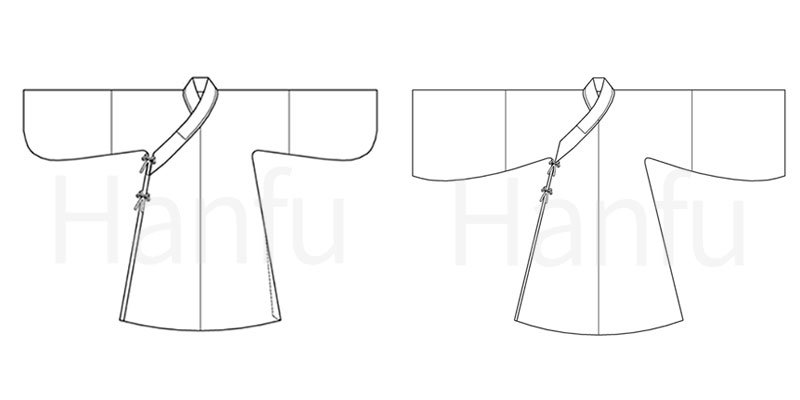

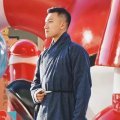
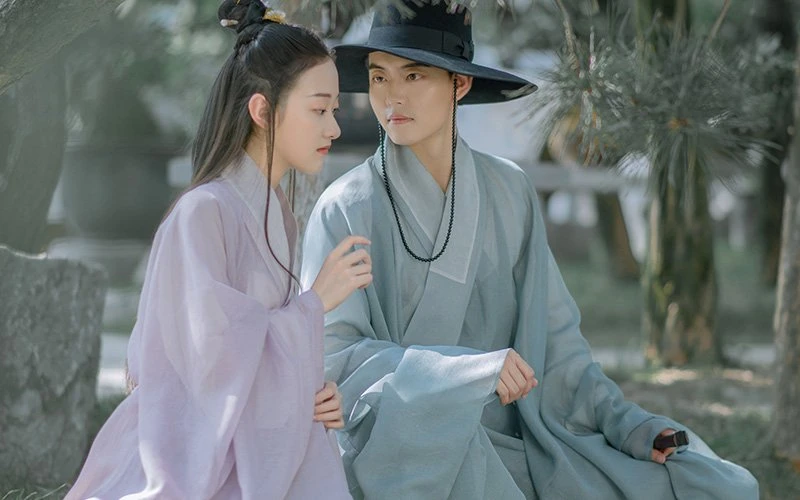
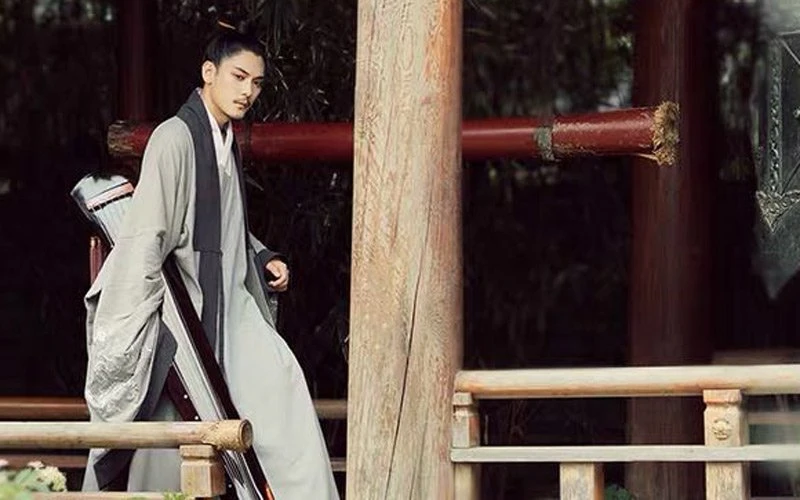
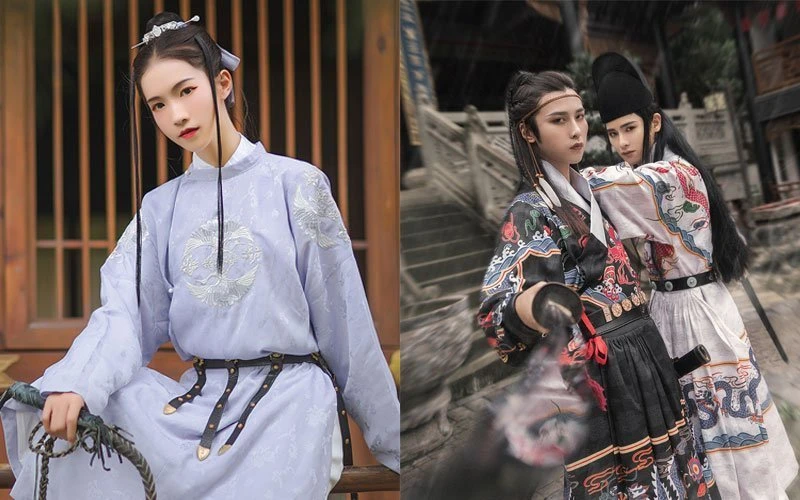

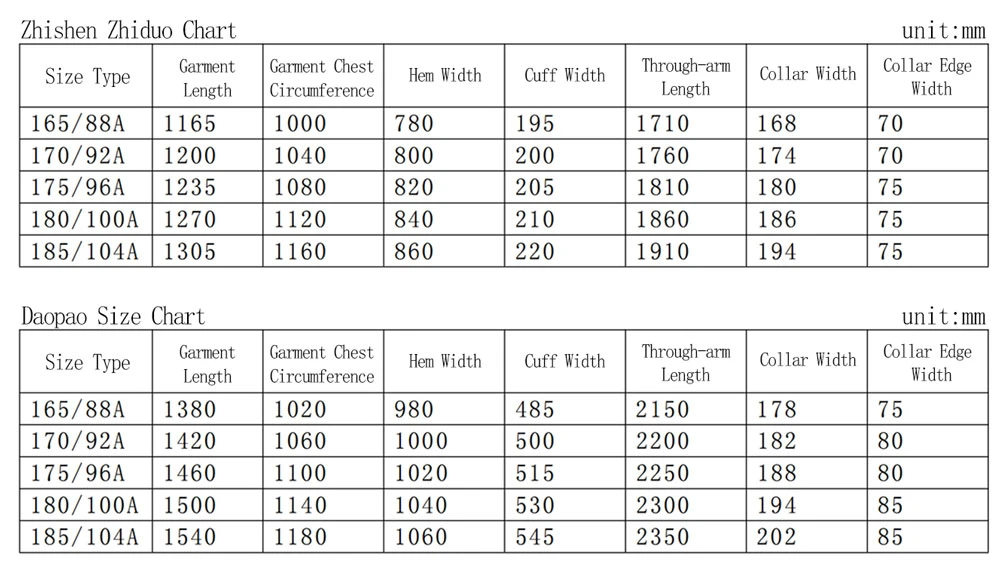
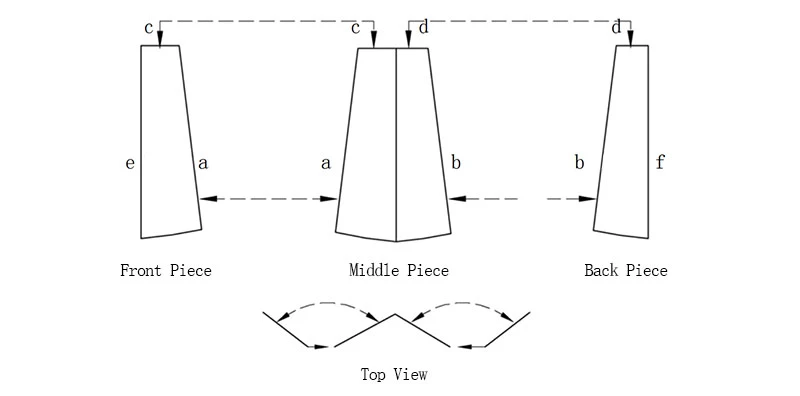
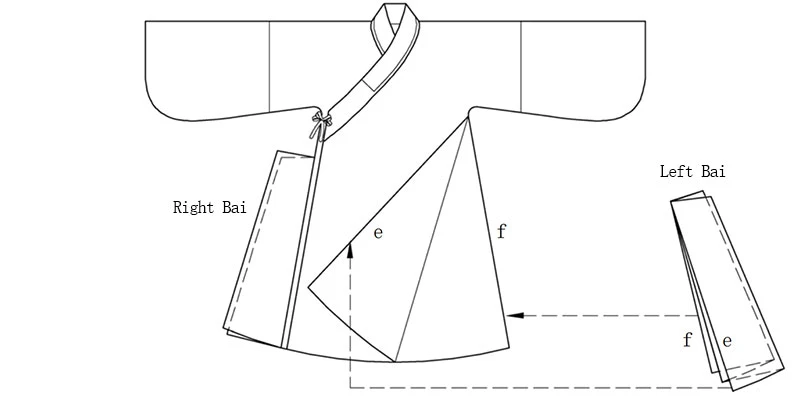
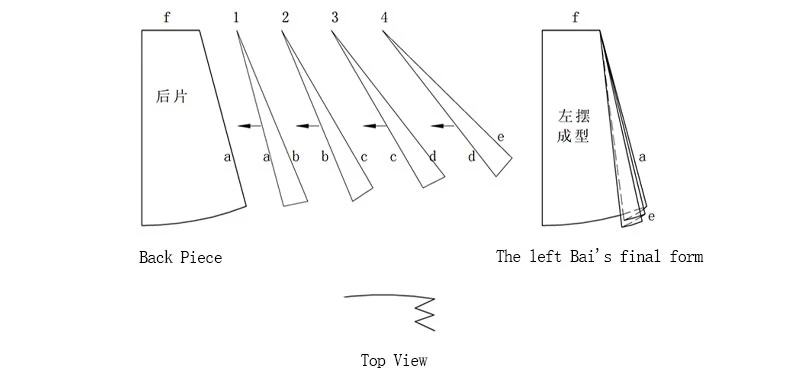
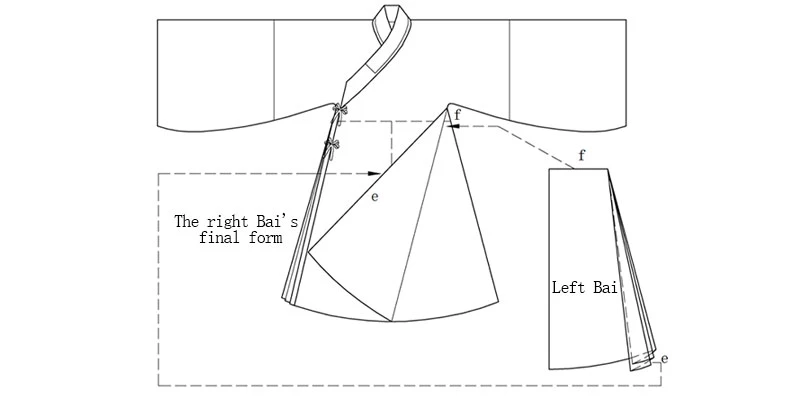




Hello, this is my first time making hanfu and Im confused on how to put together the top pieces of the daopao. For some reason I cant figure out how to cross them correctly in the front. Does anyone have and tips or advice? Thank you so much!😊
I am a little confused about the collar - the piece in the pattern seems to only be for the protective layer? So what are the measurements for the whole collar?
The collar size in the cutting diagram is the size of the entire collar. However, as you can see, an extra protective layer has been added to the collar. The size of the protective layerare not listed in the diagram.
I think there might be an error in the daopao pattern then. I made the collar 1020mm in lenght (size 170/92A) and it's just not long enough. I can see that the collar for the 170/92A zhiduo is supposed to be 1200mm in lenght. Maybe the 1020 in the daopao pattern is a typo, and was supposed to be 1200?
I personally think you need to adjust to the reality. Because I judge that Huafeng Mozhu, the author of this hanfu cutting chart, adjusting the detail chart of different sizes according to the scale. For example, in daopao, the neckline is not the same length for different sizes, but the collar is the same.😲😟
Take this green daopao as an example. The collar size in the article corresponds to the green collar part of this daopao, while the white part is not listed in detail. In fact, the white protective layer is equivalent to REPLACE the original green collar.
Such complicated, but this really helps with those "inner hem" and "outer hem" people used, because that term makes it so much more confusing. Take note, people, use "bai" please 😂
Thank you so much! I wrecked my head over that 摆 /bai/ piece in other descriptions!
Please, could anyone explain the following part:
--- Ming Zhiduo were the cross collar, knee-length garment, slit on both sides without hem, ---
What does 'hem' mean here? As far as I know, hem is the lower edge of a skirt so a garment can't be with out a hem? Or is it 摆 /bai/ again?
Thank you if anybody can help.
--- Ming Zhiduo were the cross collar, knee-length garment, slit on both sides without hem, ---
I directly used the pinyin "Bai" to represent the 摆 in Zhishen and Daopao. Coincidentally, it is very close to the Chinese 下摆 (hem), so it resulted the error🥲🥲
Thank you for pointing out this error.🥰🤗